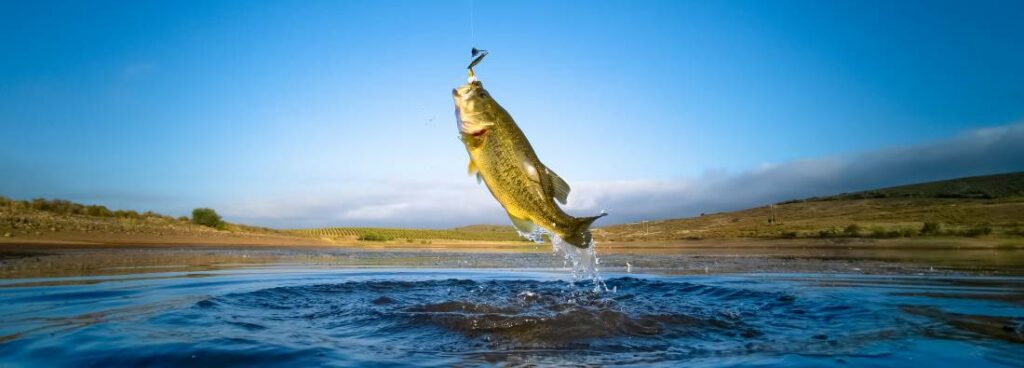Stories Worth Reeling In...
Last Updated on September 22, 2024
Bass fishing has a storied past that stretches back centuries. It all started in the early 19th century in the United States, driven largely by the need for a food source. Eventually, it evolved into a sport, capturing the hearts of millions across the globe.
Table of Contents
Records show that in the early 1900s, bass fishing began to take off, especially as advancements in gear and tackle were made. The invention of the baitcasting reel in particular made a significant impact. This was a time when bass fishing tournaments began gaining popularity. From local competitions to more organized national events, competitive bass fishing started taking shape.
One major milestone was the establishment of the Bass Anglers Sportsman Society (B.A.S.S.) in 1967 by Ray Scott. This organization played a crucial role in promoting bass fishing as a sport and helped spread awareness through magazines, tournaments, and conservation efforts. The first Bassmaster Classic in 1971 was a watershed moment, cementing the sport’s place in the world of competitive angling.
Another significant development was the catch-and-release movement, which started gaining momentum in the 1970s. This practice not only helped conserve bass populations but also transformed how anglers approached fishing. It underscored a respect for nature and a desire to sustain fish populations for future generations.
Today, bass fishing is a multi-billion-dollar industry with millions participating globally. Its history is rich with traditions, innovations, and a community spirit that has only grown stronger over time.
Largemouth and smallmouth bass are the two most sought-after species in bass fishing. Knowing their average sizes and distinct features can enhance your fishing experience.
Largemouth bass are typically larger and can grow anywhere from one to ten pounds, with some trophy fish reaching even higher weights. The record for the largest largemouth bass caught stands at an impressive 22 pounds, 4 ounces. This species is easily identifiable by its wider mouth, extending past the eyes, and its olive-green hue with a dark lateral line.
Smallmouth bass, on the other hand, generally range from one to five pounds, with the largest recorded smallmouth weighing in at 11 pounds, 15 ounces. Unlike their largemouth cousins, smallmouth bass has a bronzish color and a smaller mouth that doesn’t extend past the eyes.
A critical difference between these two species is their habitat preferences. Largemouth bass prefer warm, calm waters with lots of vegetation, while smallmouth bass are more often found in cooler, clearer waters with rockier substrates. Understanding these habits will better position you for success in your fishing adventures.
Knowing the average sizes and key differences between largemouth and smallmouth bass allows you to tailor your fishing strategies accordingly.
Whether you’re targeting the larger, more aggressive largemouth or the feisty smallmouth, being well-prepared with the right knowledge gives you a significant advantage.
The appeal of bass fishing goes beyond just catching fish. It’s an activity that brings people close to nature while providing a sense of challenge and accomplishment. With each trip, anglers get to enjoy serene, picturesque environments that offer a respite from daily pressures. The serene surroundings create a perfect backdrop for a day spent on the water, whether you’re alone or with friends.
Part of the allure is the unpredictability and excitement of the catch. Bass are known for their strength and aggressive behavior, which means hooking one promises a thrilling fight. The adrenaline rush of a successful catch keeps anglers coming back time and again. It’s a test of skill, patience, and sometimes sheer luck, making every capture unique.
Bass fishing also has a strong cultural and social component. This sport has brought together communities, from local clubs to larger competitive circuits, creating a sense of camaraderie and shared passion.
Many anglers pass down their love for bass fishing through generations, making it a family tradition with deep-rooted bonds.
Additionally, the sport offers ongoing learning opportunities. With various techniques, baiting strategies, and environmental conditions to master, there is always something new to explore.
This lifelong learning aspect keeps the sport fresh and engaging, encouraging anglers to continually hone their skills.
Overall, bass fishing captivates enthusiasts with its combination of nature, challenge, social interaction, and continuous learning. It’s more than just a hobby; it’s a way to connect with the great outdoors and fellow anglers, making every expedition memorable.

To truly excel in bass fishing, mastering a variety of techniques is crucial.
One popular method is topwater fishing, which involves using lures that float on the surface, enticing bass to strike with dramatic splashes. This technique is particularly effective in the early morning or late evening when fish are more likely to feed near the surface.
Another effective approach is the use of jigs, which are versatile and can be used throughout the year. They mimic the movement of prey, making them irresistible to bass hiding in cover such as weeds or submerged structures.
Drop shooting is a more refined technique that works well in clear waters with minimal cover. This method uses a suspended bait presentation that stays off the bottom, attracting bass that might not be actively feeding.
Crankbait fishing involves using lures designed to dive to various depths, allowing anglers to cover a significant amount of water and locate active fish. These lures are particularly useful when fish are scattered and not concentrated in one area.
Spinnerbaits are another go-to choice for many anglers. They generate vibrations and flash that provoke bass to strike, making them effective in cloudy or murky waters where visibility is low.
When it comes to baiting tips, selecting the right color for your lure is key. Bright colors work well in stained or muddy waters, while natural colors are more effective in clear conditions. Additionally, matching the size of your bait to the size of the local prey can significantly improve your chances of success.
Proper casting techniques also play a vital role. Practice makes perfect, and being able to cast accurately allows you to target specific spots where bass are likely hiding, such as around logs, rocks, or vegetation.
Lastly, don’t overlook the importance of patience and adaptability. Conditions can change quickly on the water, so being willing to adjust your strategy based on the behavior of the fish and the environment will set you apart as a skilled angler.

When it comes to bass fishing, having a useful set of frequently asked questions can help both beginners and experienced anglers alike.
Here are some key points to keep in mind:
What’s the best time of day to fish for bass? Early morning and late evening are often the most productive times as bass are more active.
Do I need a boat to fish for bass? While boats can give you access to more fishing spots, many anglers have great success fishing from the shore or using kayaks.
What’s the best type of rod and reel for bass fishing? Medium-heavy rods paired with baitcasting reels are popular choices for their versatility and control.
How do I know where to find bass? Look for structures like submerged logs, rocks, and vegetation where bass are likely to hide.
Now that you’ve armed yourself with some essential knowledge, it’s time to hit the water. The beauty of bass fishing lies in its blend of strategy, patience, and excitement. Whether you’re casting your first line or refining advanced techniques, each trip offers the potential for a new adventure.
Bass fishing isn’t just about the catch; it’s about the journey and the memories you create along the way. Cherish the peaceful moments on the water, the thrill of the chase, and the camaraderie with fellow anglers.
Remember, every day on the lake presents a new learning experience. Embrace the unpredictability and enjoy each moment.